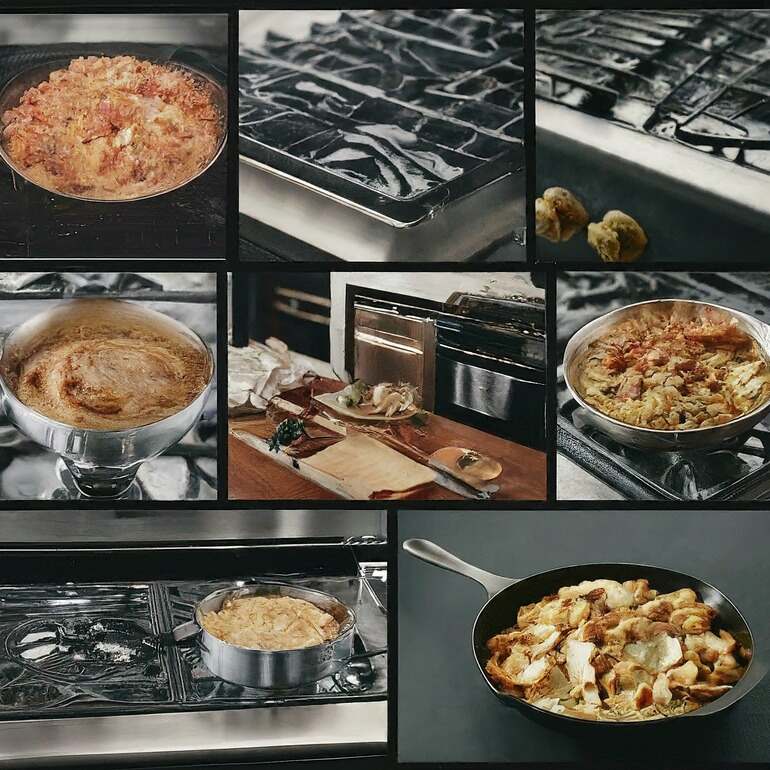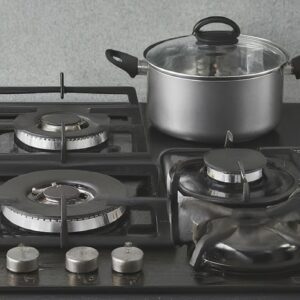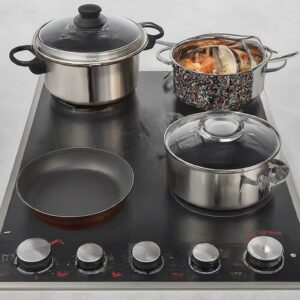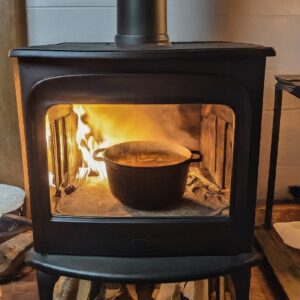Types of Stoves: How to Choose the Best One for Your Home
Choosing the best stove for your home made simple with our detailed guide to gas, electric, induction, and wood-burning options!

The stove is one of the focal points of the kitchen hence selecting the right one can enhance the cooking ability and the experience.
Our comprehensive guide delves into popular options like gas, electric, induction, or wood-burning stoves. By highlighting their unique features along with advantages and disadvantages, we will help you make an informed choice for your house!
1. Gas Stoves
Gas stoves are used in restaurants and households because of their ease of use. These are popular for their ability to provide tight temperature regulation and equipping heat simultaneously.

Features:
- Immediate Heat Response: Gas stoves are probably the easiest to control in terms of the level of heat that is required as they produce heat instantly.
- Visible Flame: It also provides the means for the optic control of the heat intensity, which provides the operator with the desired flexibility.
- Even Heat Distribution: The gas burners heat evenly and are ideal for searing and simmering.
- Compatibility: Gas stoves are compatible with all types of cookware.
Pros:
- Fast and simple temperature changes
- Operates in low light conditions (if lit manually).
- Durable and long-lasting
Cons:
- Is available only if connected to natural gas
- May be less fuel-efficient as compared to all-electric models
Best For: Individuals who require pinpoint specific temperature regulation in their kitchen and who use their cooking stoves for preparing a great variety of meals.
2. Electric Stoves
Electric stoves are easy to use and have sleek glossy coats which give it a modern look. It is standard or popular in many of the homes.

Features:
- Consistent Temperature: Electric stoves emit consistent heat that is therefore ideal for cooking especially baking.
- Smooth Cooktop: The surface is easy to clean all the splashed liquids and has a more pleasant, minimalistic appearance
- Safety Features: Some of the features that are available in many electric stoves include a hot surface indicator.
Pros:
- It is easier to clean than gas stoves.
- Provides equal heat distribution
- Much safer for families that have children
Cons:
- Slow to warm and to cool
- Will not be operational during a power failure
Best For: For those people who are not interested in using fancy stoves and those people who want consistent heat without the necessity of electricity and gas connections.
3. Induction Stoves
A more timely efficient and eco-friendly one is an induction cooktop – a cooktop that uses electromagnetic fields to provide heat directly to the utensils.

Features:
- Energy Efficiency: Induction stoves provide increasing energy efficiency since they heat only the pot or the pan and not the entire surface of the cooktop.
- Precise Temperature Control: With quicker heating capabilities, precise temperature control is on par with gas stoves.
- Safety: Safety is ensured as the cooktop stays cool, therefore decreasing the probability of burns.
Pros:
- Rapid heating and cooling.
- Gas or electric stoves are less energy-efficient than this.
- Suitable for families with kids in terms of safety
Cons:
- Usually, other types of stoves are less costly than this.
- Not all types of cookware may be compatible.
Best For Individuals or families who prioritize energy conservation and seek a speedy, secure, and effective cooking experience.
4. Wood-Burning Stoves
For those who appreciate the authentic taste of fire-cooked meals and rustic allure, wood-burning stoves are an excellent conventional option.

Features:
- Natural Heat Source: Utilizing wood logs as the primary fuel, this cooking method provides a traditional and organic heat source.
- Off-Grid Cooking: Cooking off the grid is perfect for regions lacking electricity or gas connections.
- Ambiance: Adding ambiance to your kitchen with a warm and rustic feel.
Pros:
- Can serve as a source of heat for your dwelling.
- Suitable for living off the grid or in isolated locations.
- Infuses food with a distinct taste.
Cons:
- A steady amount of wood is necessary.
- It requires more manual effort to utilize and upkeep.
Best For Residences located in remote locations or individuals who appreciate conventional cooking techniques and require a versatile stove.
The Bottom Line
Choosing the best stove for your home is determined by how you cook, the energy source preference, and the kitchen arrangement. Gas stoves offer precise control, electric ones are convenient to use while induction models conserve power, and wood-burning versions add a countryside feel.
Weigh up each option’s attributes including merits and drawbacks to locate an ideal appliance that best serves your requirements as well as elevates culinary outcomes.





